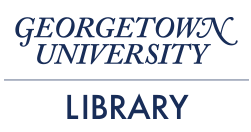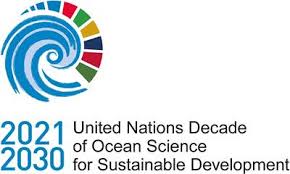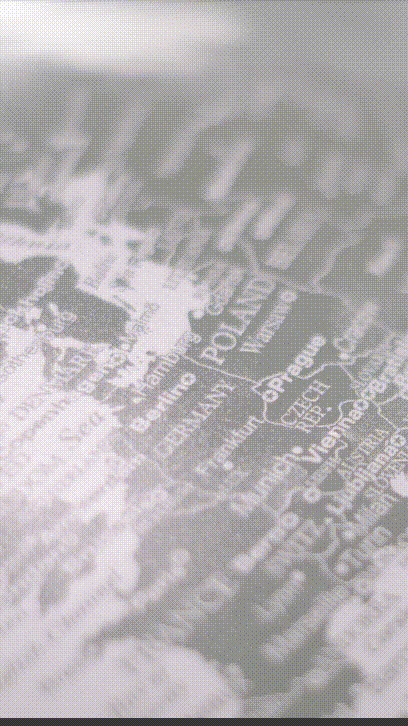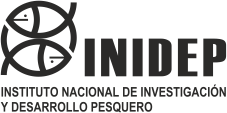Catch trends of small-scale fishers near marine protected areas in southeastern Philippines
DOI:
https://doi.org/10.47193/mafis.3832025010706Keywords:
Fishing gears, fisheries management, marine protected area, monsoon, reef fishAbstract
Fishers are highly dependent on marine resources regarding food and income, which can lead to resource over-exploitation. Coral bleaching, climate change impacts, overfishing, marine pollution, and illegal fishing all pose threats to marine ecosystems, calling for conservation initiatives like the establishment of marine protected areas (MPAs). This study focused on the catch trends of small-scale fishers located nearby to MPAs in Mati, Mabini, San Isidro, and Lupon, southeastern Philippines. It describes the catch trends and fishing effort (CPUE) in the locally managed MPAs in Davao region and some of its implications. Data collection was conducted through actual landed catch surveys based on participatory catch assessment. The fishing gears represented in the study sites included fish traps, spear guns, longline, troll line, hook and line, multiple handlines, and gill net. The catch frequency from the different study sites was quantified (Mati = 2.1-4.0 kg trip-1, Lupon = 10.1-20.0 kg trip-1, San Isidro = 2.1-4.0 kg trip-1, Mabini = 0.1-2.0 kg trip-1) and showed declining trends. Such circumstances call for strict enforcement of the no-fishing zones within the established MPAs to generate greater yields in the long-term and benefits for the local communities. Moreover, there is a need for accurate record-keeping using databases for all the MPAs because documenting MPA recovery relies on credible data sources. Well-protected MPAs have shown abundant fisheries yield and healthy marine ecosystems that foster eco-tourism and enhance awareness on marine conservation. Ecotourism activities within the MPAs may help balance out the spatial and economic displacement of fishers that previously fish in the MPAs sites.
Downloads
References
Abesamis RA, Alcala AC, Russ GR. 2006b. How much does the fishery at Apo Island benefit from the spillover of adult fish from the adjacent marine reserve? Fish Bull. 104 (3): 360-375.
Abesamis RA, Russ GR, Alcala AC. 2006a. Gradients of abundance of fish across no‐take marine reserve boundaries: evidence from Philippine coral reefs. Aquat Conserv. 16 (4): 349-371.
Abreo NAS, Macusi ED, Blatchley DD, Cuenca GC. 2016. Ingestion of marine plastic debris by green turtle (Chelonia mydas) in Davao Gulf, Mindanao, Philippines. Philipp J Sci. 145 (1): 17-23.
Alcala AC, Russ GR. 2006. No-take marine reserves and reef fisheries management in the Philippines: a new people power revolution. Ambio. 35 (5): 245-254. DOI: https://doi.org/10.1579/05-A-054R1.1
Aliño PM, Atrigenio MP, Quibilan MCC, Tiquio MGJ. 2004. The significance of coastal ecosystem stewardship to fisheries productivity. In: Turbulent seas: the status of Philippine marine fisheries. Cebu City: Department of Agriculture, Bureau of Fisheries and Aquatic Resources. p. 79-83.
Ambal RGR, Duya MV, Cruz, MA, Coroza OG, Vergara SG, de Silva N, Tabaranza B. 2012. Key biodiversity areas in the Philippines: priorities for conservation. Threat Taxa. 4 (8): 2788-2796.
Añasco CP, Monteclaro HM, CatedrillaLC, Lizada JC, Baylon CC. 2021. Measuring small island disaster resilience towards sustainable coastal and fisheries tourism: the case of Guimaras, Philippines. Hum Ecol. 49 (4): 467-479.
Anticamara JA, Go KTB. 2016. Spatio-temporal declines in Philippine fisheries and its implications to coastal municipal fishers’ catch and income. Front Mar Sci. 3: 21. DOI: https://doi.org/10.3389/fmars.2016.00021
Appelman M. 2015. A catch per unit effort (CPUE) spatial metric with respect to the Western North Atlantic pelagic longline fishery [master thesis]. Fort Lauderdale: Nova Southeastern University. https://nsuworks.nova.edu/occ_stuetd/36.
Arceo HO, Alino PM, Gonzales ROM. 2008. Where are we now with marine protected areas? In: Coral reef information network of the Philippines (PhilReefs). Reefs through time: initiating the state of the coast’s reports. Quezon City: MPA Support Network, Marine Environment and Resources Foundation and Marine Science Institute, University of the Philippines. 152 p.
Armada NB. 2002. Fishery resources assessment of Davao Gulf, Philippines. In: Resource and social assessment of Davao Gulf, Philippines. University of the Philippines Visayas: Miagao.
Balisco RAT, Tahajudjin CJD, Vigonte AC. 2019. Fishing gears and their common catch in two coastal areas of Palawan, Philippines: implications to fisheries management. Int J Fish Aquat Stud. 7 (2): 216-222.
Barboza A, Macusi ED, Borazon EQ, Santos MD, Muallil RN, Nallos IM. 2024. Small-scale fisheries (SSF) management and conservation schemes and their application in the Philippines. Mar Policy. 161: 106018.
Behivoke F, Etienne MP, Guitton J, Randriatsara RM, Ranaivoson E, Léopold M. 2021. Estimating fishing effort in small-scale fisheries using GPS tracking data and random forests. Ecol Indic. 123: 107321. DOI: https://doi.org/10.1016/j.ecolind.2020.107321
Bell JD, Kronen M, Vunisea A, Nash WJ, Keeble G, Demmke A, Andréfouët S. 2009. Planning the use of fish for food security in the Pacific. Mar Policy. 33 (1): 64-76. DOI: https://doi.org/10.1016/j.marpol.2008.04.002
Bobiles RU, Nakaruma Y. 2019. Partially protected marine areas as a conservation tool for commercially important fishes in the Philippines: Do age, size, and design matter? Reg Stud Mar Sci. 25: 100459. DOI: https://doi.org/10.1016/j.rsma.2018.100459
Burgess G, Johns K. 1999. Commercial shark fishery observer program: analysis of the large coastal shark fishery - July and August 1998 season in the south-eastern United States, with a review of the 1998 commercial shark fishery in the region. Final Report to Highly Migratory Species Division. Silver Spring: National Marine Fisheries Service. 19 p.
Cabral RB, Aliño PM, Balingit ACM, Alis CM, Arceo HO, Nañola Jr CL, Geronimo RC, Partners MSN. 2014. The Philippine Marine Protected Area (MPA) database. Philipp Sci Lett. 7 (2): 300-308.
Dangan-Galon F, Dolorosa RG, Sespeñe JS, Mendoza NI. 2016. Diversity and structural complexity of mangrove forest along Puerto Princesa Bay, Palawan Island, Philippines. J Mar Isl Cult. 5 (2): 118-125. DOI: https://doi.org/10.1016/j.imic.2016.09.001
Daw TM. 2008. Spatial distribution of effort by artisanal fishers: exploring economic factors affecting the lobster fisheries of the Corn Islands, Nicaragua. Fish Res. 90 (1-3): 17-25. DOI: https://doi.org/10.1016/j.fishres.2007.09.027
Galveia MC, Macusi ED. 2025. Management effectiveness of marine protected areas (MPAs) in the Southeastern Mindanao, Philippines. Mar Policy. 174: 106596. DOI: https://doi.org/10.1016/j.marpol.2025.106596
Harley SJ, Myers RA, Dunn A. 2001. Is catch-per-unit-effort proportional to abundance? Can J Fish Aquat Sci. 58 (9): 1760-1772.
Higgins RM, Vandeperre F, Perez-Ruzafa A, Santos RS. 2008. Priorities for fisheries in marine protected area design and management: implications for artisanal-type fisheries as found in southern Europe. J Nat Conserv. 16 (4): 222-233. DOI: https://doi.org/10.1016/j.jnc.2008.09.001
Horigue V, Aliño PM, Pressey RL. 2014. Evaluating management performance of marine protected area networks in the Philippines. Ocean Coast Manage. 95: 11-25. DOI: https://doi.org/10.1016/j.ocecoaman.2014.03.023
Jennings S. 2000. Patterns and prediction of population recovery in marine reserves. Rev Fish Biol Fish. 10: 209-231. DOI: https://doi.org/10.1023/A:1016619102955
Jennings S, Kaiser M, Reynolds JD. 2001. Marine fisheries ecology. Oxford: Blackwell Science.
Jimenez LA, Nanual BJ, Verdote DMM, Labaja MJJ, Inabiogan MK, Rapiz FGB. 2015. Sustainable tourism in an ecologically critical area: implications to Dahican and its threatened marine megafauna. Davao Res J. 11 (1): 22-34.
Lester SE, Halpern BS. 2008. Biological responses in marine no-take reserves versus partially protected areas. Mar Ecol Prog Ser. 367: 49-56. DOI: https://doi.org/10.3354/meps07599
Licuanan WY, Robles R, Reyes M. 2019. Status and recent trends in coral reefs of the Philippines. Mar Pol Bull. 142: 544-550. DOI: https://doi.org/10.1016/j.marpolbul.2019.04.013
Macusi ED, Camaso KL, Barboza A, Macusi ES. 2021b. Perceived vulnerability and climate change impacts on small-scale fisheries in Davao Gulf, Philippines. Front Mar Sci. 8: 597385. DOI: https://doi.org/10.3389/fmars.2021.597385
Macusi ED, Costa-Neves AC, Tipudan CD, Babaran RP. 2023. Closed season and the distribution of small-scale fisheries fishing effort in Davao Gulf, Philippines. World. 4 (1): 40-55.
Macusi ED, Katikiro RE, Babaran RP. 2017. The influence of economic factors in the change of fishing strategies of anchored FAD fishers in the face of declining catch, General Santos City, Philippines. Mar Policy. 78: 98-106.
Macusi ED, Liguez AKO, Macusi ES, Digal LN. 2021a. Factors influencing catch and support for the implementation of the closed fishing season in Davao Gulf, Philippines. Mar Policy. 130: 104578.
Macusi ED, Liguez CGO, Macusi ES, Liguez AKO, Digal LN. 2022. Factors that influence small-scale Fishers’ readiness to exit a declining fishery in Davao Gulf, Philippines. Ocean Coast Manage. 230: 106378. DOI: https://doi.org/10.1016/j.ocecoaman.2022.106378
Macusi ED, Macusi ES, Jimenez LA, Catam-isan JP. 2020. Climate change vulnerability and perceived impacts on small-scale fisheries in eastern Mindanao. Ocean Coast Manage. 189: 105143. DOI: https://doi.org/10.1016/j.ocecoaman.2020.105143
Macusi ED, Sabino LL, Pislan HT, Macusi ES. 2025. Impacts of extreme climate change event on small-scale fishers and their community and their adaptation in Baganga, Davao Oriental. World. 6 (1): 18. DOI: https://doi.org/10.3390/world6010018
Mamauag SS, Aliño PM, Martinez RJS, Muallil RN, Doctor MVA, Dizon EC, Cabral RB. 2013. A framework for vulnerability assessment of coastal fisheries ecosystems to climate change-tool for understanding resilience of fisheries (VA-TURF). Fish Res. 147: 381-393. DOI: http://doi.org/10.1016/j.fishres.2013.07.007
Meeanan C, Noranarttragoon P, Sinanun P, Takahashi Y, Kaewnern M, Matsuishi TF. 2023. Estimation of the spatiotemporal distribution of fish and fishing grounds from surveillance information using machine learning: the case of short mackerel (Rastrelliger brachysoma) in the Andaman Sea, Thailand. Reg Stud Mar Sci. 62: 102914. DOI: https://doi.org/10.1016/j.rsma.2023.102914
Muallil RN, Deocadez M, Martinez JR, Campos WL, Mamauag SS, Nañola Jr, CL, Aliño PM. 2019. Effectiveness of small locally-managed marine protected areas for coral reef fisheries management in the Philippines. Ocean Coast Manage. 179: 104831.
Muallil RN, Deocadez MR, Martinez RJS, Mamauag SS, Nañola Jr, CL, Aliño PM. 2015. Community assemblages of commercially important coral reef fish inside and outside marine protected areas in the Philippines. Reg Stud Mar Sci. 1: 47-54. DOI: https://doi.org/10.1016/j.rsma.2015.03.004
Muallil RN, Tambihasana AM, Enojarioa MJ, Onga YN, Nañola CL. 2020. Inventory of commercially important coral reef fishes in Tawi-Tawi Islands, Southern Philippines: the heart of the coral triangle. Fish Res. 230: 105640. DOI: https://doi.org/10.1016/j.fishres.2020.105640
Nanual BJ. 2014. Fisheries resources in five marine protected areas (MPAs) in Davao Oriental. Davao Res J. 10 (1): 45-56. DOI: https://doi.org/10.59120/drj.v10i1.23
Nañola CL Jr, Aliño PM, Carpenter KE. 2011. Exploitation-related reef fish species richness depletion in the epicenter of marine biodiversity. Environ Biol Fish. 90: 405-420. DOI: https://doi.org/10.1007/s10641-010-9750-6
Nañola CL Jr, Plasabas CM, Ballesteros III AS, Agustin RB, Suaybaguio MSA, Cozo M. 2013. Ecological and economic assessment of two marine protected areas in the island garden city of Samal, Davao Gulf, Philippines. Galaxea J Coral Reef Stud. 15: 309-322. DOI: https://doi.org/10.3755/galaxea.15.309
Obar AEA, Noblezada-Payne MMP, Monteclaro HM, Babaran RP. 2020. Characterization of the handline fisheries in Batanes Province, Philippines. Phil J Nat Sci. 26: 32-47.
Pérez-Ruzafa A, Martín E, Marcos C, Zamarro JM, Stobart B, Harmelin-Vivien M, Polti S, Planes S, García-Charton JA, González-Wangüemert M. 2008. Modelling spatial and temporal scales for spill-over and biomass exportation from MPAs and their potential for fisheries enhancement. J Nat Conserv. 16 (4): 234-255. DOI: https://doi.org/10.1016/j.jnc.2008.09.003
Pickens C, Smart T, Reichert M, Sedberry GR, McGlinn D. 2021. No effect of marine protected areas on managed reef fish species in the southeastern United States Atlantic Ocean. Reg Stud Mar Sci. 44: 101711. DOI: https://doi.org/10.1016/j.rsma.2021.101711
PhilAtlas. 2023. Philippine geographic and administrative divisions. Demographics of Davao Oriental. Edition 2024. [accessed 2025 Mar]. https://www.philatlas.com/mindanao/r11/davao-oriental.html.
Pomeroy R, Andrew N. 2011. Small-scale fisheries management: frameworks and approaches for the developing world. Wallingford: CABI. 282 p.
Pomeroy R, Garces L, Pido M, Silvestre G. 2010. Ecosystem-based fisheries management in small-scale tropical marine fisheries: emerging models of governance arrangements in the Philippines. Mar Policy. 34 (2): 298-308. DOI: https://doi.org/10.1016/j.marpol.2009.07.008
Rapiz FGB. 2014. Coral cover assessment of five marine protected areas in Davao Oriental for reef conservation and management. Davao Res J. 10 (1): 1-14. DOI: https://doi.org/10.59120/drj.v10i1.20
Read T. 2014. Stewarding biodiversity and food security in the coral triangle: achievements, challenges, and lessons learned. USAID, Coral Triangle Support Partnership. 48 p.
Rola AC, Narvaez TA, Naguit MRA, Elazegui DD, Brillo BBC, Paunlagui MM, Jalotjot HC, Cervantes MM. 2018. Impact of the closed fishing season policy for sardines in Zamboanga Peninsula, Philippines. Mar Policy. 87: 40-50. DOI: https://doi.org/10.1016/j.marpol.2017.09.029
Russ GR. 2002. Yet another review of marine reserves as reef fishery management tools. In: Sale PF, editor. Coral reef fishes: dynamics and diversity in a complex ecosystem. New York: Academic Press. p. 421-441.
Samonte GPB, Eisma-Osorio RL, Amolo R, White AT. 2016. Economic value of a large marine ecosystem: Danajon double barrier reef, Philippines. Ocean Coast Manage. 122: 9-19. DOI: http://doi.org/10.1016/j.ocecoaman.2016.01.001
Tan BCA, Anticamara JA, Villanueva MCS. 2018. Modeling of degraded reefs in Leyte Gulf, Philippines in the face of climate change and human-induced disturbances. Clim Disaster Dev J. 8 (1): 1-12.
Zimmerman JK, Palo RT. 2011. Reliability of catch per unit effort (CPUE) for evaluation of reintroduction programs - a comparison of the mark-recapture method with standardized trapping. Knowl Manag Aquat Ecosyst. 401: 7. DOI: https://doi.org/10.1051/kmae/2011016
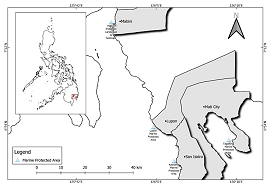
Published
Issue
Section
License
Copyright (c) 2025 Reyuof P. Manuel, Edison D. Macusi

This work is licensed under a Creative Commons Attribution-NonCommercial-ShareAlike 4.0 International License.
Authors of articles published in Marine and Fishery Sciences retain copyright on their articles, except for any third-party images and other materials added by Marine and Fishery Sciences, which are subject to copyright of their respective owners. Authors are therefore free to disseminate and re-publish their articles, subject to any requirements of third-party copyright owners and subject to the original publication being fully cited. Visitors may also download and forward articles subject to the citation requirements. The ability to copy, download, forward or otherwise distribute any materials is always subject to any copyright notices displayed. Copyright notices must be displayed prominently and may not be obliterated, deleted or hidden, totally or partially.
This journal offers authors an Open Access policy. Users are allowed to read, download, copy, distribute, print, search, or link to the full texts of the articles, or use them for any other legal purpose within the Creative Commons 4.0 license (BY-NC-SA), without asking prior permission from the publisher or the author. This is in accordance with the BOAI definition of Open Access.











